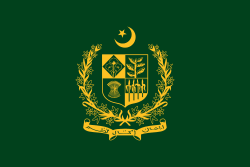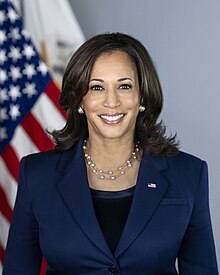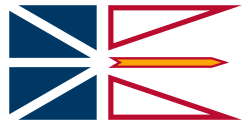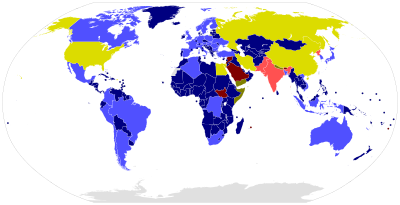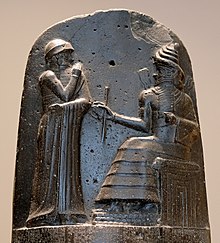
Back Portal:Politik ALS بوابة:السياسة Arabic بوابة:سياسة ARZ Портал:Политика Bulgarian প্রবেশদ্বার:রাজনীতি Bengali/Bangla Portal:Politika BS دەروازە:سیاسەت CKB Portál:Politika Czech Portal:Politik German Portal:Siyaset DIQ
| Main | Topics and categories | Tasks and projects |
The Politics portal
Politics (from Ancient Greek πολιτικά (politiká) 'affairs of the cities') is the set of activities that are associated with making decisions in groups, or other forms of power relations among individuals, such as the distribution of resources or status. The branch of social science that studies politics and government is referred to as political science.
It may be used positively in the context of a "political solution" which is compromising and non-violent, or descriptively as "the art or science of government", but also often carries a negative connotation. The concept has been defined in various ways, and different approaches have fundamentally differing views on whether it should be used extensively or in a limited way, empirically or normatively, and on whether conflict or co-operation is more essential to it.
A variety of methods are deployed in politics, which include promoting one's own political views among people, negotiation with other political subjects, making laws, and exercising internal and external force, including warfare against adversaries. Politics is exercised on a wide range of social levels, from clans and tribes of traditional societies, through modern local governments, companies and institutions up to sovereign states, to the international level.
In modern nation states, people often form political parties to represent their ideas. Members of a party often agree to take the same position on many issues and agree to support the same changes to law and the same leaders. An election is usually a competition between different parties.
A political system is a framework which defines acceptable political methods within a society. The history of political thought can be traced back to early antiquity, with seminal works such as Plato's Republic, Aristotle's Politics, Confucius's political manuscripts and Chanakya's Arthashastra. (Full article...)
Selected article
Regulamentul Organic was a quasi-constitutional organic law enforced in 1831–1832 by the Imperial Russian authorities in Moldavia and Wallachia (the two Danubian Principalities that were to become the basis of the modern Romanian state). The official onset of a common Russian protectorate lasting until 1854, and itself officially in place until 1858, the document signified a partial confirmation of traditional government (including rule by the hospodars). Conservative in its scope, it also engendered a period of unprecedented reforms which provided a setting for the Westernization of local society. The Regulament offered the two Principalities their first common system of government.
Featured picture
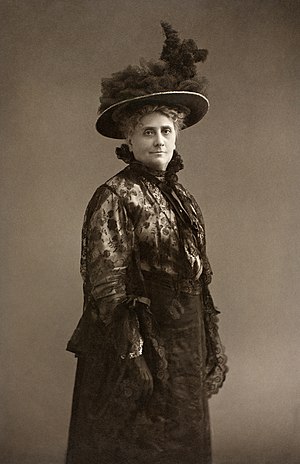
Gina Krog (20 June 1847 – 14 April 1916) was a Norwegian suffragist, teacher, liberal politician, writer and editor. She played a central role in the Norwegian women's movement from the 1880s until her death, notably as a leading campaigner for women's right to vote. In 1884, Krog co-founded the Norwegian Association for Women's Rights with liberal MP Hagbart Berner. Over the next two decades, Krog co-founded the Women's Voting Association, the National Association for Women's Suffrage, and the Norwegian National Women's Council, spearheading the presentation of women's suffrage proposals to the Storting (the Norwegian parliament). She was an early member of the Liberal Party and served as a deputy member of its national board.

This is a list of current members of the Senate of Canada (French: Le Sénat du Canada), the upper house of the Parliament of Canada. Unlike the members of Parliament in the House of Commons, the 105 senators are appointed by the governor general on the advice of the prime minister. Senators originally held their seats for life; however, under the British North America Act, 1965, members may not sit in the Senate after reaching the age of 75.
Seats are allocated on a regional basis: each of the four major regions receives 24 seats, with 9 remaining seats assigned to jurisdictions outside those regions. The four major regions are Ontario, Quebec, the Maritime provinces (New Brunswick, Nova Scotia and Prince Edward Island), and the Western provinces (Alberta, British Columbia, Manitoba and Saskatchewan). The seats for Newfoundland and Labrador (6), the Northwest Territories (1), Yukon (1), and Nunavut (1) are assigned apart from these regional divisions. The province of Quebec has 24 Senate divisions that are constitutionally mandated. In all other provinces, a Senate division is strictly an optional designation of the senator's own choosing, and has no real constitutional or legal standing. A senator who does not choose a special senate division is considered a senator for the province at large. (Full article...)
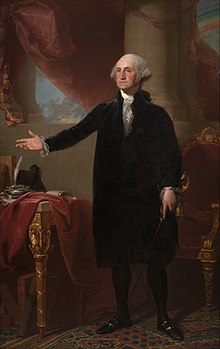
United States President George Washington appointed 39 Article III United States federal judges during his presidency, which lasted from April 30, 1789 to March 4, 1797. The first group of Washington's appointments—two justices of the Supreme Court of the United States and ten district court judges—began service two days after Congress passed the Judiciary Act of 1789, which formally established the federal judiciary. Washington's last court appointee received his commission twelve days before the end of Washington's presidency.
As the first president, Washington was responsible for appointing the entire Supreme Court; he appointed a record eleven justices, including two Chief Justices and who were confirmed from outside the Court and one former Justice named as Chief Justice by a recess appointment, but not ultimately confirmed to the position. Additionally, Washington nominated Robert H. Harrison, who declined to serve, and nominated William Cushing for elevation to Chief Justice, who likewise declined. (Full article...)
The governor of Alaska is the head of government of Alaska. The governor is the chief executive of the state and is the holder of the highest office in the executive branch of the government as well as being the commander in chief of the Alaska's state forces.
Twelve people have served as governor of the State of Alaska over 14 distinct terms, though Alaska had over 30 civilian and military governors during its long history as a United States territory. Only two governors, William A. Egan and Bill Walker, were born in Alaska. Two people, Egan and Wally Hickel, have been elected to multiple non-consecutive terms as governor. Hickel is also noted for a rare third party win in American politics, having been elected to a term in 1990 representing the Alaskan Independence Party. The longest-serving governor of the state was Egan, who was elected three times and served nearly 12 years. The longest-serving territorial governor was Ernest Gruening, who served over 13 years. (Full article...)

The 23rd and current prime minister is Justin Trudeau, who assumed office on 4 November 2015. There are currently five living former prime ministers. The most recent former prime minister to die was Brian Mulroney, on 29 February 2024. (Full article...)
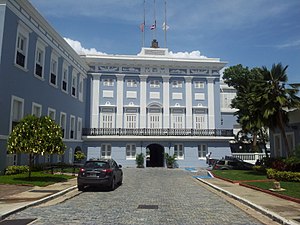
The first person to officially occupy the position was Spanish conquistador Juan Ponce de León in 1509.
At the time, the Spanish monarchy was responsible for appointing the functionary who would perform this office. The first native Puerto Rican to perform the function was Juan Ponce de León II, as interim governor in 1579. During this administration, all of those appointed to take the position had served another function within the empire's government or the Roman Catholic Church. In 1898, the United States invaded Puerto Rico and the Spanish government ceded control of the island to the United States. During the first two years, the entire government in Puerto Rico was appointed by the president of the United States. In 1900, the American government approved the establishment of the Foraker Act as a federal law, this act established a civilian government in the island. In 1947, the federal Elective Governor Act was enacted, which created a new system where, since 1948, the governor is elected through a democratic process every four years. The governor is in charge of Puerto Rico's executive branch and is responsible for appointing executive branch agency heads, including the Secretary of State, who fulfills the role of lieutenant governor, the legislative branch's ombudsman and comptroller and all judges in the judicial branch. (Full article...)
Before being part of British North America, the constituents of Canada consisted of the former colonies of Canada and Acadia from within New France which had been ceded to Great Britain in 1763 as part of the Treaty of Paris. French Canadian nationality was maintained as one of the "two founding nations" and legally through the Quebec Act which ensured the maintenance of the Canadian French language, Catholic religion, and French civil law within Canada, a fact which remains true today. (Full article...)

The Norwegian Nobel Committee awards the Nobel Peace Prize annually "to the person who shall have done the most or the best work for fraternity between nations, for the abolition or reduction of standing armies and for the holding and promotion of peace congresses". As dictated by Alfred Nobel's will, the award is administered by the Norwegian Nobel Committee and awarded by a committee of five people elected by the Parliament of Norway.
Each recipient receives a medal, a diploma, and a monetary award prize (that has varied throughout the years). It is one of the five prizes established by the 1895 will of Alfred Nobel (who died in 1896), awarded for outstanding contributions in chemistry, physics, literature, physiology or medicine. (Full article...)
Selected quote
Selected biography
Hammurabi (/ˌxæmʊˈrɑːbi/; Akkadian: 𒄩𒄠𒈬𒊏𒁉 Ḫâmmurapi; c. 1810 – c. 1750 BC), also spelled Hammurapi, was the sixth Amorite king of the Old Babylonian Empire, reigning from c. 1792 to c. 1750 BC. He was preceded by his father, Sin-Muballit, who abdicated due to failing health. During his reign, he conquered the city-states of Larsa, Eshnunna, and Mari. He ousted Ishme-Dagan I, the king of Assyria, and forced his son Mut-Ashkur to pay tribute, bringing almost all of Mesopotamia under Babylonian rule.
Did you know (auto-generated) -

- ... that the continuing influence of the Catholic Church in the politics of the Philippines means that the country lacks a divorce law?
- ... that Western media treated Egyptian activist Gihan Ibrahim as a face of the Egyptian revolution of 2011, but rarely mentioned her revolutionary-socialist political views?
- ... that Dave Barrow quit municipal politics to work at his family's insurance brokerage before becoming mayor of Richmond Hill?
- ... that Valentina Bodrug-Lungu has declared that Moldova's political climate does not encourage female participation, despite having a woman president?
- ... that thousands of political prisoners in Indonesia were interned in the Waeapo River valley in Buru?
- ... that the party leader of the new Dutch youth political party LEF – For the New Generation tattooed his party's program points on his forearm?
More did you know...
- ...that the Voting Rights Act of 1965 banned literacy tests as a voting qualification in the U.S.?
- ...that four member states of the European Union have de jure opt-outs and do not participate fully in all common policies?
- ...that Cornelius, Oregon is named after pioneer Thomas R. Cornelius, who served in the both the Territorial and State legislatures?
- ...that the Society of the Friends of Peasants had significant influence on the Danish Constitution of 1849?
- ...that just before the invasion of Poland, members of the German minority from Deutscher Volksverband were trained in sabotage by the Abwehr agents arriving in Poland from Germany?
- ...that in April 2009, Lim Hwee Hua became the first woman to be appointed a full Minister in Singapore's Cabinet?
In this month
- April 1, 1979 – Iran's government becomes an Islamic Republic by a 98% vote, overthrowing the Shah officially.
- April 9, 1948 – the period known as La Violencia begins with the assassination of Colombian Liberal Party leader Jorge Eliécer Gaitán. For the next ten years Liberals, Communists and Conservatives would fight each other in the conflict.
- April 9, 2003 – Government of Saddam Hussein overthrown by American forces in Iraq.
- April 19, 2006 – Han Myung-sook becomes South Korea's first female Prime Minister.
- April 24, 2005 – Presidential elections in Togo return Faure Gnassingbe to power two months after he was installed by the military following the death of his father, Gnassingbé Eyadéma.
- April 28, 1937 – Saddam Hussein, the President of Iraq was born.
- April 30, 1945 – Adolf Hitler and his wife Eva Braun, commit suicide as the Red Army approached the Führerbunker in Berlin. Karl Dönitz succeeds Hitler as President of Germany; Joseph Goebbels succeeds Hitler as Chancellor of Germany.
News and Current events
- August 11: 4 local government areas in New South Wales, Australia locked down after COVID-19 case
- August 11: Australia: AstraZeneca vaccine access expanded by Victorian government
- August 1: Australia: Victorian lockdown lifted
- July 29: Tunisia's president dismisses prime minister, suspends parliament
- July 25: Australia: Wikinews interviews Reg Kidd, mayor of the City of Orange, about COVID-19 lockdown and local government
- July 23: South Australia enters week-long lockdown to contain COVID-19 Delta variant spread
- July 21: Technological University Dublin senior lecturer Dr Lorcan Sirr speaks to Wikinews on housing market in Ireland
- July 21: Three rural councils in New South Wales, Australia enter 7-day lockdown
- July 21: Australia: Victoria lockdown extended by a week with 85 active cases recorded
- July 15: California governor signs new state budget, eligible Californians to get stimulus payments
Topics and categories
General images
Related portals
Associated Wikimedia
The following Wikimedia Foundation sister projects provide more on this subject:
-
Commons
Free media repository -
Wikibooks
Free textbooks and manuals -
Wikidata
Free knowledge base -
Wikinews
Free-content news -
Wikiquote
Collection of quotations -
Wikisource
Free-content library -
Wikiversity
Free learning tools -
Wiktionary
Dictionary and thesaurus
Sources
More portals
© MMXXIII Rich X Search. We shall prevail. All rights reserved. Rich X Search



